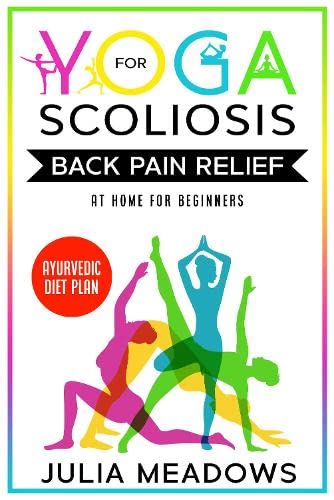In the quest for physical and mental well-being, yoga has become an increasingly popular practice around the globe. However, as with any physical activity, performing yoga incorrectly can have adverse effects, especially on the back. In this article, we will explore the question: Can yoga worsen back pain if not done correctly? Let’s delve into the intricacies of yoga and how it can impact your back health.
Can Yoga Worsen Back Pain?
Yoga, when done correctly and mindfully, can be a powerful tool for alleviating back pain and improving overall well-being. However, improper form and overexertion can lead to back pain or aggravate existing issues.
The Importance of Proper Alignment
- Proper Alignment is Key: Yoga is all about alignment and mindfulness. When done correctly, yoga can actually alleviate back pain by strengthening the core, improving flexibility, and promoting better posture.
- Mind Your Posture: Incorrect postures, like rounding the back or twisting too deeply, can put excessive strain on the spine, leading to discomfort and potential injuries.
- Consult a Professional: If you are new to yoga or have existing back issues, seeking guidance from a certified yoga instructor is crucial to ensure you perform poses with proper alignment.
Practicing yoga incorrectly or without proper alignment can worsen back pain, especially if you have pre-existing back issues. Here are some potential issues that can worsen back pain if yoga is not done properly, presented in a table format:
| Yoga Practice | Potential Issues that can Worsen Back Pain |
|---|---|
| Forward Bends | Strain or injury to the lower back due to excessive rounding without proper support or alignment. |
| Twists | Aggravation of back pain if twists are forced, sudden, or not executed with proper alignment. |
| Backbends | Compression or strain on the spine if backbends are overextended or not performed with appropriate technique. |
| Unsupported Poses | Practicing poses without proper support or using incorrect props can strain the back muscles and exacerbate back pain. |
| Incorrect Alignment | Not maintaining proper alignment in any pose can stress the back, potentially causing pain or injury. |
| High-Impact Movements | Quick, high-impact movements can jar the spine and exacerbate back pain. |
| Overexertion | Overexerting yourself or pushing beyond your limits can strain the back muscles and cause or worsen back pain. |
| Incorrect Modifications | Improper modification of poses for your specific back condition can lead to increased discomfort or injury. |
| Lack of Warm-up | Skipping warm-up exercises or not preparing the body adequately before yoga can increase the risk of back strain or injury. |
| Ignoring Pain Signals | Disregarding pain signals during practice and pushing through discomfort can lead to further injury and worsen existing back pain. |
| Poor Breath Awareness | Neglecting proper breath control and awareness during yoga can hinder relaxation and potentially exacerbate tension and back pain. |
It’s crucial to practice yoga under the guidance of a qualified yoga instructor, especially if you have a history of back pain or any other medical conditions.
Understanding the Risk Factors
- Individual Differences: Every person’s body is unique, and what works for one may not suit another. Certain individuals might be more prone to back pain if their bodies are not ready for specific yoga poses.
- Pre-existing Conditions: People with pre-existing back problems, such as herniated discs or sciatica, should be cautious about certain yoga poses that could exacerbate their condition.
- Overdoing It: Pushing yourself too hard or trying advanced poses without proper preparation can increase the risk of straining your back muscles.
Practicing Yoga Safely
- Warm Up: Always warm up before diving into your yoga routine. Gentle stretches and movements can prepare your muscles and joints for the more intense poses.
- Listen to Your Body: Pay attention to how your body feels during yoga. If a pose causes pain or discomfort, back off immediately and consult a yoga instructor.
- Modify Poses: Not every pose may be suitable for your body, and that’s perfectly fine. Modify poses to match your current level of flexibility and strength.
Poses to Approach with Caution
| Pose Name | Potential Risk |
|---|---|
| Deep Forward Fold | Can strain the back if not performed with a flat back and engaged core. |
| Camel Pose | May compress the lumbar spine and strain the back if not done mindfully. |
| Upward Dog | Incorrect form can put pressure on the lower back and worsen pain. |
FAQs – Addressing Common Concerns
- Is yoga safe for all types of chronic back pain? Yoga can be safe for individuals with various types of chronic back pain, but the safety and effectiveness depend on the specific condition. While many people with chronic back pain find relief through yoga, others may need to modify or avoid certain poses to prevent exacerbating their condition. Consulting with a healthcare professional and a qualified yoga instructor is essential to create a tailored yoga practice that suits individual needs.
- What types of yoga are best for chronic back pain? Not all yoga styles are created equal when it comes to chronic back pain. Gentle and therapeutic forms of yoga, such as Hatha yoga, Iyengar yoga, and restorative yoga, are often recommended for individuals with back pain. These styles focus on proper alignment, use of props, and gentle movements to support the spine and promote healing.
- Are there specific poses that individuals with chronic back pain should avoid? Yes, certain yoga poses may not be suitable for individuals with chronic back pain. Poses that involve deep backbends, excessive twisting, or intense forward folds could potentially strain the back and worsen pain. Additionally, inversions like headstands and shoulder stands should be approached with caution. A qualified yoga instructor can guide individuals with back pain on modifying or avoiding such poses.
- How can yoga help manage chronic back pain? Yoga offers multiple benefits that can help manage chronic back pain. Firstly, yoga helps strengthen the core and back muscles, providing better support for the spine. Secondly, the practice improves flexibility, which can reduce stiffness and tension in the back. Lastly, yoga encourages better posture, which is crucial for preventing and alleviating back pain.
- Can yoga replace other forms of therapy for chronic back pain? While yoga can be a valuable tool for managing chronic back pain, it is not meant to replace other forms of therapy or medical treatments. Yoga can complement conventional treatments and may be integrated into a comprehensive pain management plan. Individuals with chronic back pain should work with their healthcare providers to determine the most appropriate combination of therapies for their specific condition.
- Should individuals with chronic back pain avoid advanced yoga classes? In general, individuals with chronic back pain should avoid jumping into advanced yoga classes without proper preparation. Advanced classes often involve more challenging poses and sequences that may not be suitable for those with back issues. Beginners or individuals with chronic back pain should start with gentle or beginner-level classes and progress gradually under the guidance of a qualified instructor.
- How long does it take to experience relief from back pain through yoga? The timeline for experiencing relief from back pain through yoga varies for each person. Some individuals may notice improvements after just a few weeks of consistent practice, while others might take longer. Consistency and patience are key factors, and it’s essential to listen to the body and avoid pushing too hard to avoid further strain.
- Are there any specific breathing techniques that can help with back pain? Yes, certain breathing techniques, such as diaphragmatic breathing and mindful breathing, can help with back pain by promoting relaxation, reducing stress, and increasing body awareness. Incorporating these breathing techniques into a yoga practice can enhance its benefits for back pain relief.
Conclusion on Can Yoga Worsen Back Pain
Yoga, when done correctly and mindfully, can be a powerful tool for alleviating back pain and improving overall well-being. However, improper form and overexertion can lead to back pain or aggravate existing issues.
Remember to prioritize proper alignment, consult a professional, and listen to your body to enjoy the benefits of yoga without the risk of worsening back pain. Embrace yoga as a way to nurture your body and mind, and let it be a path towards a healthier, happier life.
Fun Fact
Did you know that yoga has been practiced for thousands of years and originated in ancient India? It was initially developed as a spiritual practice and has evolved into the diverse and popular form we know today.
Originally posted 2023-03-30 15:01:21.
Co-founder of Yogalian.com. Over 8 years of sharing yoga and mindfulness across Vietnam and online. Passionate about bringing body awareness and peace into daily life.





